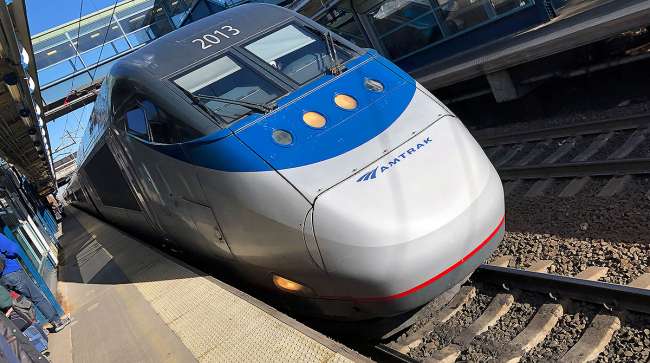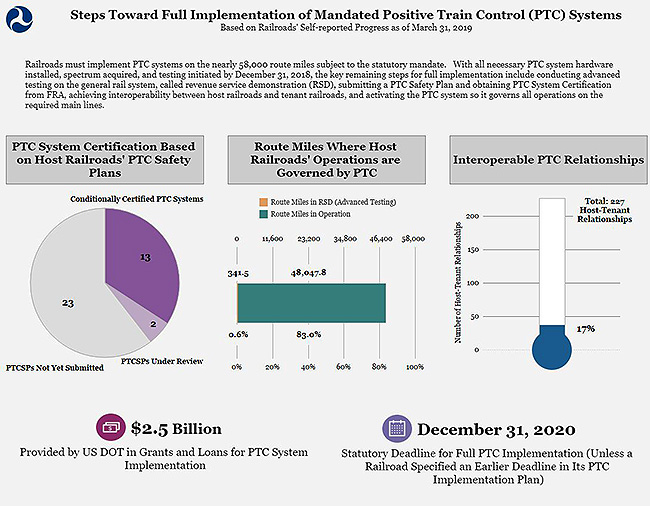Senior Reporter
Federal Regulators Report Progress on Railroads’ PTC Implementation

[Stay on top of transportation news: Get TTNews in your inbox.]
The country’s rail operators continue to show progress with the implementation of automatic braking technology that Congress mandated in an effort to enhance safety, federal regulators announced recently.
The systems, called positive train controls, were in operation on about 48,050 of nearly 58,000 route miles required under the congressional mandate as of March 31, the Federal Railroad Administration indicated in a report that chronicled the year’s first quarter. The implementation amounted to a 3% increase from the previous quarter.
On an additional 341 route miles, railroads are proceeding with advanced field testing — termed revenue service demonstration, or RSD — the agency indicated.
The 41 railroads that fall under the PTC mandate either implemented the systems by the end of last year or qualified for a deadline extension to Dec. 31, 2020. FRA indicated it is carrying out comprehensive oversight aimed at ensuring next year’s deadline is met. By federal law, major freight and commuter systems are required to implement the technology.

Federal Railroad Administration
“We will maintain our laser-like focus on this rail technology initiative, and FRA will continue allocating and leveraging all necessary resources to support the swift implementation of PTC,” FRA administrator Ronald Batory said in a May 29 statement. The agency will host several informational symposiums through 2020 with railroads, railroad associations and PTC experts.
At an informational symposium in February, Transportation Secretary Elaine Chao emphasized the technology’s potential contributions to safety.
“The adoption of PTC systems is the most fundamental change in our country’s rail safety technology since the introduction of automatic train control nearly 100 years ago,” she said. “Once fully implemented, PTC will save lives, protect property and make America’s vast rail network considerably safer.”
FRA publishes First Quarter 2019 Positive Train Control Implementation Status Updates. Read the full press release here: https://t.co/w4bwqsnVjj — The FRA (@USDOTFRA) May 29, 2019
According to FRA, the implementation process for operators consists of undergoing a revenue service demonstration of uncertified PTC systems on the rail network, presenting a PTC safety plan and gaining regulatory certification, demonstrating interoperability and activating the PTC system.
The four operators FRA said finalized the implementation are the Port Authority Trans-Hudson, Southern California Regional Rail Authority, North County Transit District and Portland and Western Railroad.
Earlier this year, executives from BNSF Railway Co. and Amtrak shared with U.S. House lawmakers their commitment to meeting the PTC deadline.
“Widespread deployment of new technologies like positive train control, designed to address human error, will open the door to an exciting new era of safety and efficiency improvement for U.S. freight railroads,” the Association of American Railroads, an advocate for freight operators, said in a statement, and noted that Class I railroads would be ready by the 2020 deadline.

